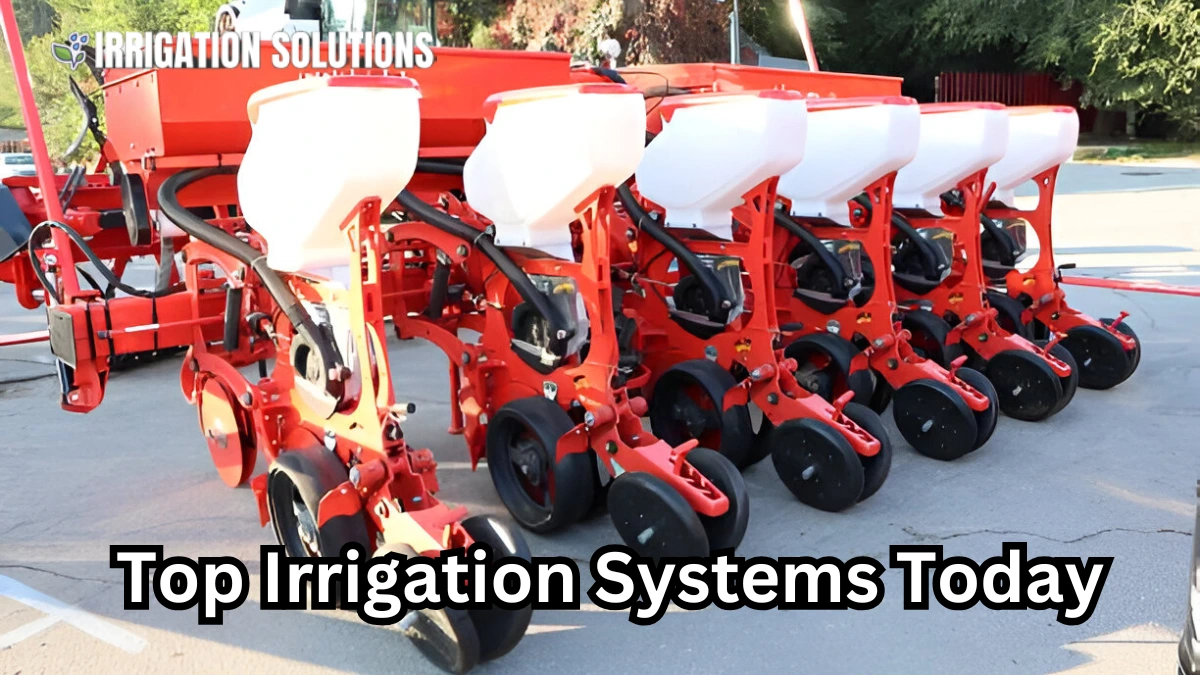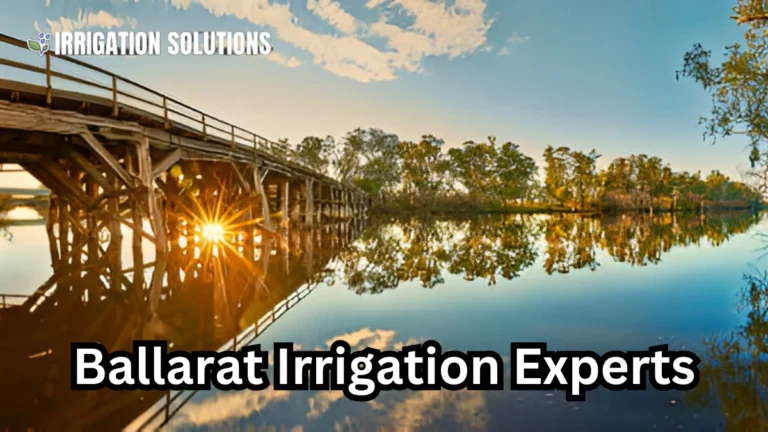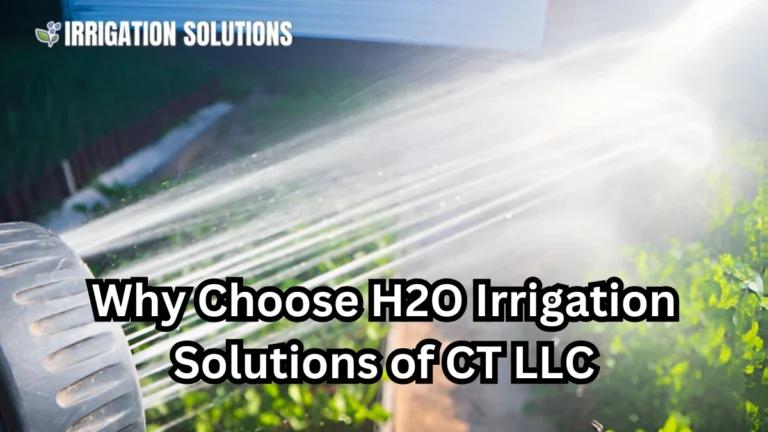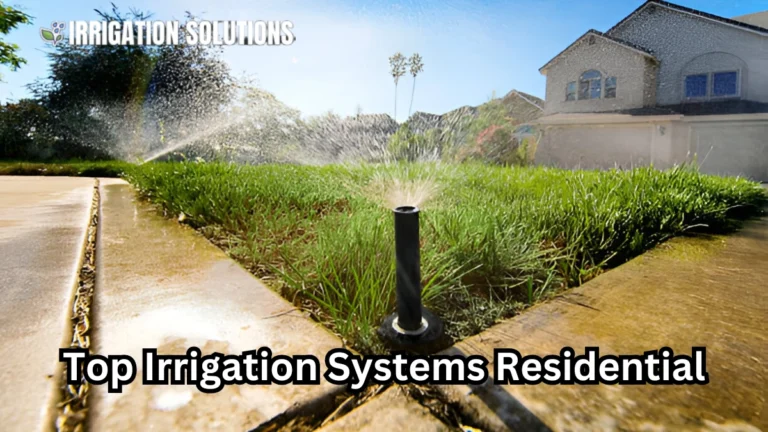Top Irrigation Systems Today

Irrigation has come a long way from the traditional methods used by ancient civilizations. Today, the evolution of irrigation systems is driven by technology, environmental challenges, and the need to increase agricultural productivity. Whether it’s for large scale farming or home gardening, modern irrigation systems are more efficient, sustainable, and versatile than ever before. In this post, we’ll explore the different types of irrigation systems, their benefits, challenges, and some innovative approaches shaping the future of water management.
The Importance of Efficient Irrigation
Irrigation plays a crucial role in agriculture, especially in regions where rainfall is scarce or unreliable. According to the Food and Agriculture Organization (FAO), around 70% of global freshwater usage is directed towards agriculture. Efficient irrigation systems can help save water, reduce energy consumption, and improve crop yield, making them indispensable for food security and sustainable farming practices.
But the challenge is not just about water usage; it’s about using the right type of system for specific agricultural needs. With the increasing demand for food and the impacts of climate change, it’s more important than ever to adopt irrigation methods that maximize water efficiency while minimizing waste.
Types of Irrigation Systems
Irrigation systems can be broadly classified into different types, each with its own set of advantages and applications. Understanding these systems is essential for selecting the most suitable option for your specific needs.
Drip Irrigation
Drip irrigation is often considered the most efficient irrigation method available today. It involves delivering water directly to the plant roots through a network of tubes, pipes, and emitters. This method minimizes water wastage by ensuring that water is applied precisely where it’s needed.
Benefits of Drip Irrigation:
- Water Efficiency: Drip irrigation can save up to 50% more water compared to traditional methods.
- Reduced Weed Growth: By targeting only the plant roots, drip irrigation reduces water wastage to weeds and other non-target plants.
- Fertility Enhancement: Fertilizers can be applied along with water through the drip system, reducing the need for additional chemicals.
Case Study: In Israel, a country facing water scarcity, drip irrigation has transformed the agricultural landscape. The country is a global leader in drip irrigation technology, which has helped boost crop yield while conserving water.
Sprinkler Irrigation
Sprinkler irrigation involves the use of sprinkler heads that spray water over a wide area, simulating rainfall. It’s ideal for crops like vegetables, fruits, and lawns, where uniform coverage is essential.
Benefits of Sprinkler Irrigation:
- Uniform Coverage: Sprinklers are designed to cover large areas, ensuring that water is distributed evenly across the field.
- Versatility: Sprinkler systems are suitable for a wide range of crops, including those that require specific water application rates.
- Flexibility: Sprinklers can be adjusted to cover different crop sizes and field shapes.
Fact: In the United States, over 50% of irrigated land uses sprinkler systems, especially in regions like California’s Central Valley.
Center Pivot Irrigation
Center pivot irrigation is a unique system that uses rotating sprinkler arms mounted on wheeled towers to irrigate large circular areas. This method is particularly useful for large scale farming operations.
Benefits of Center Pivot Irrigation:
- Coverage Efficiency: It can irrigate up to 130 acres per system, making it suitable for extensive agricultural fields.
- Water Conservation: Modern center pivot systems incorporate technologies like low pressure sprinklers and variable-rate irrigation, reducing water usage.
- Automation: Most systems are automated, allowing farmers to control water application remotely.
Flood Irrigation
Flood irrigation, also known as surface irrigation, involves flooding fields with water. This is one of the oldest and most straightforward methods of irrigation. While it’s still used in some parts of the world, it’s less efficient compared to modern methods.
Challenges of Flood Irrigation:
- Water Wastage: It can result in significant water runoff and evaporation losses.
- Labor Intensive: It requires a lot of manual labor and regular monitoring to prevent waterlogging and crop damage.
- Soil Salinization: Excessive water can lead to soil salinization, making it unsuitable for long term use.
Subsurface Irrigation
Subsurface irrigation involves placing water distribution pipes or tubes below the soil surface. This method is often used in areas with sandy or well draining soil.
Benefits of Subsurface Irrigation:
- Water Conservation: Since water is applied below the surface, evaporation losses are significantly reduced.
- Reduced Surface Runoff: It minimizes runoff and soil erosion, which can occur with surface irrigation methods.
- Improved Root Growth: Plants develop deeper root systems, which improves drought resistance and overall plant health.
Innovations in Irrigation Technology
The world of irrigation has seen significant technological advancements in recent years. These innovations aim to make irrigation systems smarter, more efficient, and sustainable.
Smart Irrigation Systems
Smart irrigation systems use weather data, soil moisture sensors, and other real-time information to optimize water usage. These systems can adjust watering schedules based on environmental conditions, reducing water waste and improving efficiency.
Key Features of Smart Irrigation:
- Soil Moisture Sensors: These sensors measure the moisture content in the soil, ensuring that plants receive the right amount of water.
- Weather Integration: Smart systems can access local weather forecasts to adjust irrigation schedules, preventing overwatering during rainy periods.
- Remote Monitoring and Control: Farmers can control and monitor their irrigation systems remotely via smartphone apps, improving convenience and efficiency.
IoT and Precision Agriculture
The integration of the Internet of Things (IoT) with irrigation systems allows farmers to collect and analyze data to improve water management practices. Sensors placed throughout the field collect data on soil moisture, temperature, and humidity, which can be used to optimize irrigation schedules.
Benefits of IoT in Irrigation:
- Data-Driven Decisions: By gathering real-time data, farmers can make more informed decisions regarding water use and irrigation management.
- Increased Yield: With precise water and nutrient management, farmers can achieve higher crop yields while conserving resources.
- Reduced Costs: Optimized irrigation can lower operational costs by reducing water, energy, and labor expenses.
Quote: “The future of agriculture lies in the integration of smart technologies. Irrigation is one of the key areas where we can save water, improve productivity, and reduce costs,” says Dr. John Smith, an agricultural expert.
The Role of Sustainable Irrigation Practices
As water scarcity becomes an increasingly pressing issue, the focus on sustainability in irrigation has never been more critical. Here are some sustainable practices being adopted worldwide:
Rainwater Harvesting
Rainwater harvesting involves collecting and storing rainwater for agricultural use. It’s a simple yet effective way to supplement traditional irrigation methods, especially in areas where rainfall is seasonal.
Benefits of Rainwater Harvesting:
- Cost-Effective: By using natural rainfall, farmers can reduce their reliance on expensive water sources like groundwater.
- Sustainability: It reduces the environmental impact of irrigation by using water that would otherwise go to waste.
- Self-Sufficiency: It can provide a reliable water source during dry periods, reducing dependence on external water supplies.
Water Recycling
Water recycling in irrigation involves reusing water from various sources, such as treated wastewater, for agricultural purposes. This method is gaining traction, especially in urban areas where water availability is limited.
Benefits of Water Recycling:
- Reduced Freshwater Consumption: By recycling water, the pressure on freshwater resources is reduced.
- Cost Savings: Using recycled water can lower water bills, especially in regions where water costs are high.
- Environmental Benefits: Recycled water can reduce the amount of wastewater discharged into rivers, helping maintain local ecosystems.
Subsurface Drip Irrigation (SDI)
Subsurface drip irrigation is a relatively new approach that combines the benefits of both drip irrigation and subsurface systems. Water is applied directly to the plant roots, below the soil surface, minimizing evaporation and surface runoff.
Benefits of SDI:
- Efficient Water Use: SDI minimizes water wastage, reducing the need for excessive irrigation.
- Reduced Weed Growth: By keeping water below the surface, weeds that thrive on surface moisture are minimized.
- Improved Soil Health: With careful monitoring, SDI can maintain soil structure and prevent soil compaction.
The Future of Irrigation Systems
Looking ahead, the future of irrigation systems lies in continued innovation and the integration of emerging technologies. Here are a few trends to keep an eye on:
Autonomous Irrigation Systems
The development of autonomous irrigation systems that can operate independently, adjusting irrigation schedules based on environmental conditions and plant needs, is on the horizon. These systems could drastically reduce the need for manual labor and make irrigation even more efficient.
Artificial Intelligence and Machine Learning
Artificial intelligence (AI) and machine learning (ML) are increasingly being used to analyze vast amounts of agricultural data. AI can predict the water needs of crops based on weather patterns, soil conditions, and plant health, optimizing irrigation decisions.
Solar Powered Irrigation
As solar energy becomes more affordable and efficient, solar-powered irrigation systems are becoming more popular, especially in remote areas. These systems harness solar power to run pumps and irrigation equipment, reducing energy costs and environmental impact.
Irrigation systems have evolved significantly, with modern technologies allowing for smarter, more efficient water management practices. Whether you’re a large scale farmer or a home gardener, adopting the right irrigation system is key to conserving water, improving crop yields, and contributing to sustainable agricultural practices.






